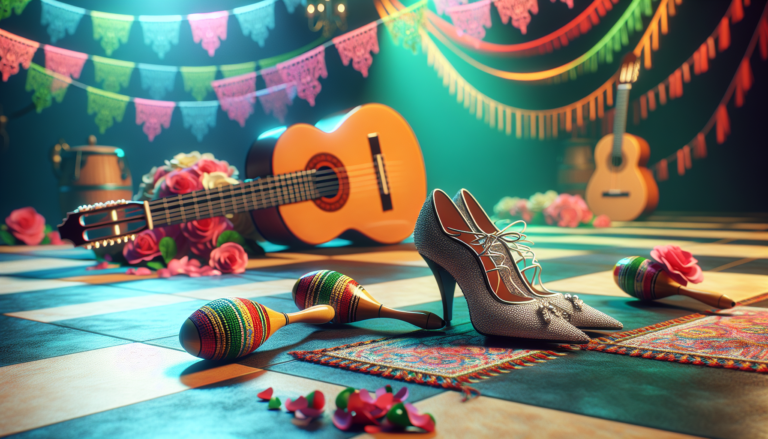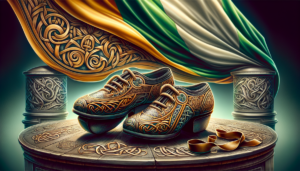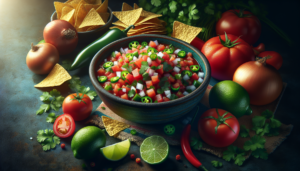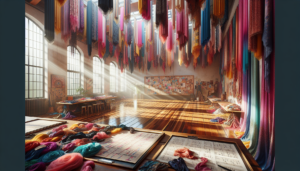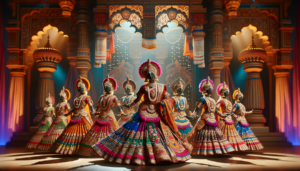Get ready to be swept away by the captivating rhythms and romantic melodies of Bachata, a dance and music genre that has captured hearts around the world. Originating from the vibrant culture of the Dominican Republic, Bachata has evolved into a global phenomenon, enchanting dancers and music lovers alike with its passionate movements and heartfelt lyrics.
In this comprehensive guide, we will dive deep into the world of Bachata, exploring its rich history, the mesmerizing dance techniques, and the soulful music that defines this beloved genre. Whether you’re a seasoned dancer or a curious newcomer, prepare to be inspired by the beauty and emotional depth of Bachata.
Introduction to Bachata
Bachata is a Latin dance and music genre that has its roots firmly planted in the Dominican Republic. Born from the streets and rural areas of the country, Bachata emerged as a means of expressing the joys, sorrows, and romantic yearnings of the Dominican people. Over time, it has grown into a global sensation, captivating audiences with its sensual movements and heartfelt melodies.
At its core, Bachata is a dance of connection and emotion. Partners move in close embrace, their bodies swaying to the rhythmic guitar strums and soulful vocals that characterize the music. The dance is a conversation between two individuals, a wordless exchange of feelings and desires, creating an intimate and passionate experience.
Origins of Bachata
The story of Bachata begins in the 1960s in the Dominican Republic. It emerged from the rural countryside and the marginalized communities of the nation, where people sought solace and expression through music and dance. Initially, Bachata was looked down upon by the upper classes, who considered it too crude and vulgar.
However, the raw emotion and relatable themes of Bachata resonated deeply with the working-class population. The music spoke of love, heartbreak, and the struggles of daily life, providing a voice for those who often felt unheard. As Bachata gained popularity, it began to spread beyond the borders of the Dominican Republic, finding audiences in neighboring countries and eventually around the world.
Evolution of Bachata Music
Bachata music has undergone a remarkable evolution since its humble beginnings. Early Bachata songs were characterized by a stripped-down sound, with the guitar as the primary instrument accompanied by percussion and vocals. The lyrics often depicted tales of love, infidelity, and the hardships of life, delivered with raw emotion and honesty.
As Bachata gained mainstream recognition, the music began to incorporate elements from other genres, such as R&B, pop, and even electronic music. Artists like Aventura and Prince Royce revolutionized the sound of Bachata, infusing it with modern production techniques and catchy melodies while still preserving its romantic essence.
Today, Bachata music continues to evolve, with artists pushing the boundaries and experimenting with new sounds and collaborations. Yet, at its heart, Bachata remains a genre rooted in emotion, telling stories of love, longing, and the human experience.
The Dance: Bachata Movements and Styles
Bachata dance is an embodiment of passion, sensuality, and connection. It is a social dance that encourages interaction and emotional expression between partners. The basic steps of Bachata are relatively simple, making it accessible to beginners, yet the dance offers endless possibilities for creativity and improvisation.
The foundation of Bachata dance lies in its four-step basic pattern, which consists of three steps and a tap or hip movement. Partners typically dance in a close embrace, with the lead guiding the follow through a series of turns, dips, and romantic gestures. The connection between dancers is essential, as they respond to each other’s movements and the music’s tempo and mood.
Basic Steps and Techniques
Learning the basic steps of Bachata is the first step in mastering this passionate dance. The four-step pattern is as follows:
- Step to the left with the left foot
- Step in place with the right foot
- Step to the left with the left foot
- Tap or lift the right foot next to the left foot
This pattern is repeated, alternating between left and right. As dancers become more comfortable with the basic steps, they can start incorporating hip movements, known as “pop” or “tap,” on the fourth count. These hip movements add a sensual and playful element to the dance.
Numerous instructional videos and tutorials are available on platforms like YouTube, providing step-by-step guidance for beginners. Channels like “Dance Doctor” offer a wealth of resources, breaking down the basics and progressively building up to more advanced techniques.
Advanced Bachata Moves
Once dancers have mastered the basic steps, they can explore the vast world of advanced Bachata moves. These moves incorporate turns, dips, and intricate footwork patterns, allowing dancers to showcase their creativity and express the music’s emotion.
Some popular advanced Bachata moves include:
- Cross-body lead: The lead guides the follow to turn and cross in front, creating a visually stunning and dynamic movement.
- Dips: Dancers can incorporate dips, where the lead supports the follow as they lean back, adding a romantic and dramatic flair to the dance.
- Footwork variations: Advanced dancers can explore different footwork patterns, such as syncopations, taps, and kicks, to add variety and musicality to their dancing.
Mastering advanced Bachata moves requires practice, patience, and a strong connection with your partner. It’s essential to communicate through body language and respond to each other’s cues, creating a seamless and emotionally charged dance experience.
Bachata Music: Heartbeat of the Dance
Bachata music is the driving force behind the dance, providing the rhythm, melody, and emotional backdrop for the movements. The music is characterized by its romantic themes, soulful vocals, and the prominent use of the guitar as the lead instrument.
Bachata songs often tell stories of love, heartbreak, and the joys and sorrows of life. The lyrics are delivered with raw emotion, allowing listeners to connect deeply with the music. The melodies are catchy and memorable, with the guitar playing a central role in creating the signature sound of Bachata.
Key Instruments and Rhythms
The guitar is the heart and soul of Bachata music. It provides the rhythmic foundation and melodic framework for the songs. Bachata guitarists often use a technique called “requinto,” which involves playing melodic phrases and improvisations on the higher strings of the guitar.
In addition to the guitar, Bachata music typically features percussion instruments such as bongos, güira (a metal scraper), and maracas. These instruments add a lively and danceable rhythm to the music, complementing the guitar and vocals.
The rhythmic pattern of Bachata is based on a 4/4 time signature, with emphasis on the fourth beat. This syncopated rhythm creates a bouncy and energetic feel, inviting dancers to move their hips and express themselves through the music.
Popular Bachata Artists
Over the years, numerous Bachata artists have left their mark on the genre, captivating audiences with their soulful vocals and romantic melodies. Some of the most popular and influential Bachata artists include:
- Aventura: This Dominican-American band, led by Romeo Santos, revolutionized Bachata music with their innovative sound and chart-topping hits like “Obsesión” and “Inmortal.”
- Prince Royce: Known for his smooth vocals and contemporary Bachata style, Prince Royce has gained international success with songs like “Corazón Sin Cara” and “Darte Un Beso.”
- Juan Luis Guerra: A renowned Dominican singer-songwriter, Juan Luis Guerra has made significant contributions to Bachata music, infusing it with elements of jazz, merengue, and Afro-Caribbean rhythms.
- Frank Reyes: Regarded as one of the pioneers of modern Bachata, Frank Reyes is known for his emotive vocals and traditional Bachata sound.
These artists, among many others, have played a crucial role in shaping the Bachata music landscape and bringing the genre to a global audience. Playlists on YouTube channels like OSOCITY showcase a diverse range of Bachata artists, providing a gateway for music lovers to discover and enjoy the best of the genre.
Learning Bachata: Resources and Community
If you’re interested in learning Bachata dance or diving deeper into the music, there are numerous resources available to support your journey. From online tutorials to local dance studios and festivals, the Bachata community offers a welcoming and inclusive environment for enthusiasts of all levels.
Online Tutorials and Playlists
The internet is a treasure trove of Bachata learning resources. Websites like YouTube host a vast array of instructional videos and tutorials that cover everything from basic steps to advanced techniques. Channels like “Dance Doctor” provide comprehensive lessons, breaking down the movements and offering tips for improving your skills.
In addition to dance tutorials, YouTube is also home to countless Bachata music playlists. Channels like OSOCITY curate collections of the best Bachata songs, making it easy to discover new artists and immerse yourself in the genre’s captivating melodies.
Bachata Festivals and Events
Bachata festivals and events provide a vibrant and immersive experience for dancers and music lovers alike. These gatherings bring together Bachata enthusiasts from around the world, offering workshops, performances, and social dancing opportunities.
One notable event is the Sydney Bachata Festival, which takes place annually in Sydney, Australia. This multi-day celebration features international instructors, live music, and a thriving Bachata community. Attendees can participate in workshops, learn from world-class dancers, and enjoy unforgettable parties and performances.
Festivals like these not only provide a platform for learning and growth but also foster a sense of community and connection among Bachata lovers. They offer a chance to meet like-minded individuals, share your passion for the dance, and create lasting friendships that extend beyond the dance floor.
The Cultural Impact of Bachata
Bachata has become more than just a dance and music genre; it has evolved into a cultural phenomenon that transcends borders and brings people together. Its roots in the Dominican Republic have given rise to a global community that celebrates the art form’s authenticity, passion, and emotional depth.
Bachata as a Unifying Force
One of the most remarkable aspects of Bachata is its ability to unite people from diverse backgrounds and cultures. The dance and music serve as a universal language, allowing individuals to connect on a deep emotional level, regardless of their origin or native tongue.
Bachata dance socials and events attract people from all walks of life, creating an inclusive and welcoming environment. On the dance floor, barriers dissolve, and people come together to share their love for the music and the connection it fosters. This sense of unity and belonging is a testament to the power of Bachata as a unifying force.
Bachata in Modern Media
As Bachata has gained global popularity, it has also made its way into various forms of media, exposing the genre to an even wider audience. Bachata music can be heard in movies, television shows, and commercials, showcasing its infectious rhythms and romantic melodies.
Social media platforms have also played a significant role in the spread of Bachata. Dancers and enthusiasts share their videos, performances, and experiences on platforms like Instagram, Facebook, and TikTok, creating a vibrant online community. These platforms have become spaces for learning, inspiration, and connection, allowing Bachata lovers to engage with each other across geographical boundaries.
The presence of Bachata in modern media has not only increased its visibility but has also contributed to its evolution. As more people discover and fall in love with the genre, they bring their own unique perspectives and influences, adding to the richness and diversity of the Bachata landscape.
In conclusion, Bachata is a dance and music genre that captivates the heart and soul. Its passion, emotion, and ability to connect people make it a truly special and enduring art form. Whether you’re a seasoned dancer or a curious newcomer, embracing Bachata can lead to a journey of self-discovery, creative expression, and profound human connection. So let the music move you, let the dance inspire you, and let Bachata be your guide to a world of love, beauty, and endless possibilities.

